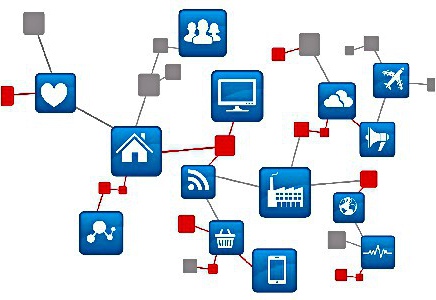The wireless industry has taken another big step forward on the path towards a single, global standard for machine-to-machine (M2M) communications. Nearly thirty major M2M standard equipment vendors converged in France this month at the first “oneM2M Interoperability Test Event” to see how well their equipment works together.
 Right now, the industry is juggling several technologies in its efforts to build out an Internet of Things (IoT). And so far, companies have been left to guess which technology will dominate.
Right now, the industry is juggling several technologies in its efforts to build out an Internet of Things (IoT). And so far, companies have been left to guess which technology will dominate.
The M2M standard proposed by oneM2M supposedly doesn’t aim to pick winners, but aims to make sure different technologies work well with each other.
“Our Release 2 specifications under development provide an interworking framework across IoT protocols, including OMA’s LightWeight M2M, AllSeen Alliance’s AllJoyn and the Open Interconnect Consortium, preserving the investments already made in each,” says oneM2M’s technical chair, Dr. Omar Elloumi of Alcatel Lucent. “This is the ‘missing link’ which will help accelerate IoT deployments.”
Event brings M2M standard closer
At the M2M standard testing event, participating companies demonstrated interoperability of their implementations across a variety of different use cases. Participants also provided clarifications and enhancements for the oneM2M specifications standard.
The event was held in mid September at the headquarters of the European Telecommunications Standards Institute (ETSI) in the south of France. The TTA (Telecommunications Technology Association of Korea) co-hosted the event, with support from the European Commission.
The 29 organizations and companies at the event included Actility, Anritsu, Cisco Systems, eDevice, eglobalmarket (EGM), the Electronics and Telecommunications Research Institute, Fraunhofer Fokus, FSCOM, HandySoft, Herit, HP, Huawei Technologies, iconectiv, the Institute for Information Industry, InterDigital Communications, Korea Electric Power Corp.,, Korea Electronics Technology Institute, Korea Telecom, LAAS-CNRS, Modacom, LG U+, nTels, NTT – Nippon Telegraph and Telephone Corp., Qualcomm Germany, Radisys, Ricoh, Sierra Telecom, the Telecommunications Technology Association (TTA), and the Telecommunications Technology Committee.
Specifically, event participants conducted tests to validate interoperability and end-to-end functionality of the oneM2M Release 1 Specifications, which include TS-0001 (Functional Architecture), TS-0004 (Service Layer Core Protocol), TS-0009 (HTTP Protocol Binding), TS-0008 (CoAP Protocol Binding) and TS-0010 (MQTT Protocol Binding). The tested implementations had to support at least one of three protocol bindings: HTTP (Hypertext Transfer Protocol), CoAP (Constrained Application Protocol) and MQTT (Message Queue Telemetry Transport).
In the future oneM2M plans to hold two interoperability events per year. The next oneM2M event is a workshop to be held December 9-11 at ETSI in France, and the next M2M standard interoperability event is scheduled for May 2016 in Korea. You can find more information on oneM2M and the M2M standard specifications at onem2m.org.
Mobile Edge Computing: an emerging technology
In related news, ETSI has just published a white paper on Mobile Edge Computing (MEC), a key emerging technology which is considered to be an important component of future generation networks, including 5G. Mobile Edge Computing is an IT service environment and cloud-computing capabilities located at the edge of the mobile network, within the Radio Access Network and in close proximity to mobile subscribers.
Telecom operators already face ever-growing mobile traffic and continued cost pressure, and the Internet of Things is predicted to further congest networks. Application and content providers are challenged with the latency of the network when connecting to the cloud. Enterprises want the ability to engage with their customers with more efficient, secure and low latency connections. MEC aims to help or resolve many of these issues.
The ETSI white paper outlines how Mobile Edge Computing is characterized by low latency, proximity, high bandwidth and real-time insight into radio network information and location awareness. It provides examples of how MEC can benefit applications such as connected vehicles, e-Health, industry automation, augmented reality, intelligent video acceleration, gaming and IoT services.
Last December, ETSI established an Industry Specification Group on Mobile Edge Computing (ISG MEC), to develop a standardized, open environment that will allow efficient and seamless integration of third-party applications across multi-vendor platforms. The group has released its Proof of Concept (PoC) framework specification.
You can find more information about the MEC group and download the white paper from the ETSI website.




